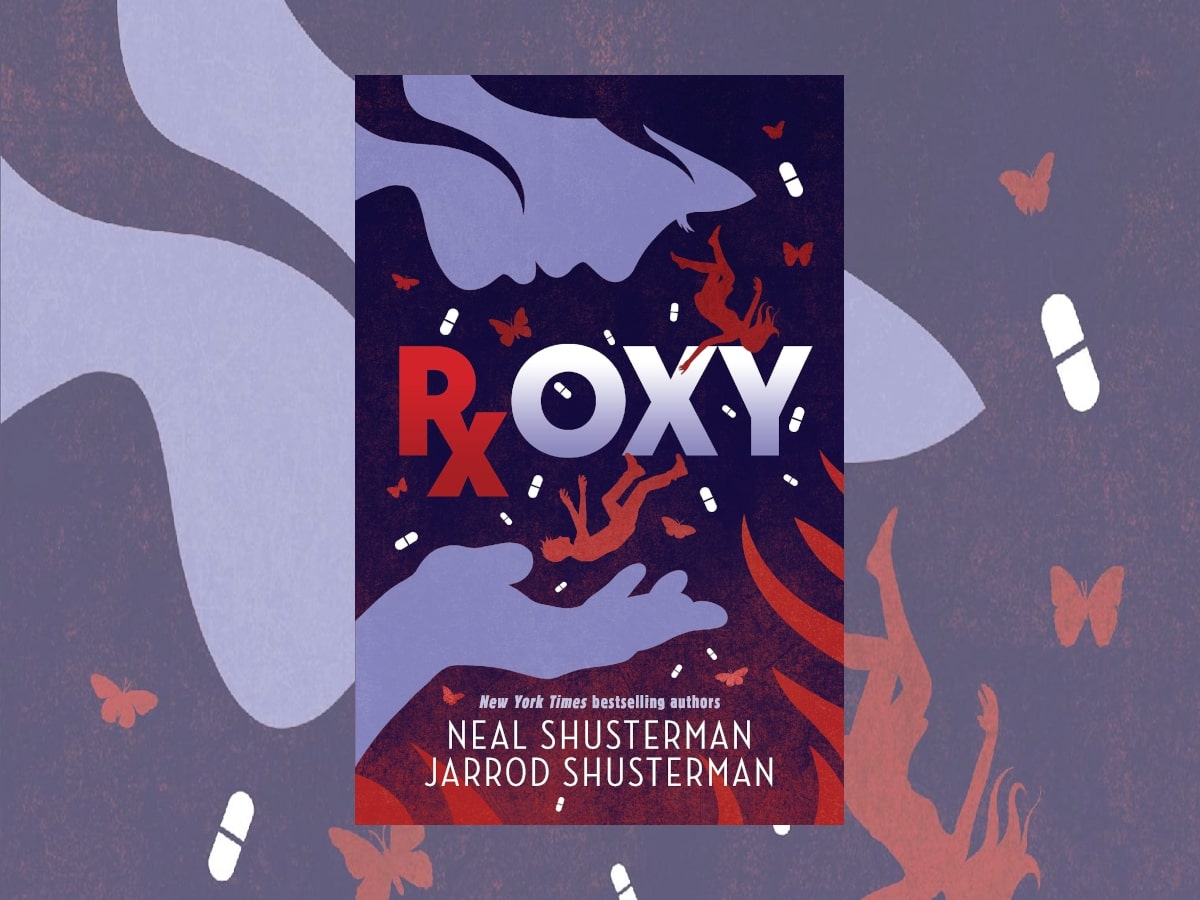Roxy by Neal and Jarrod Shusterman might just be the most terrifying book I’ve ever read. It’s not a horror; there is nothing supernatural about it. It’s the story of teenagers and addiction to prescription medicines. It’s every parent’s worst nightmare (well one of them, I guess. There are others). It’s compulsive and enlightening reading, with a very simple but extremely effective literary device.
What Is Roxy?
Roxy follows the story of brother and sister Isaac and Ivy Ramey. They’re pretty standard US teenagers (whatever a standard teenager is?!). Ivy is rebellious; Isaac plays football, and is good, if not quite scholarship good. When Ivy is threatened with removal from school and Isaac injures himself rescuing Ivy from a party that goes sour, things start to go very wrong for the Ramey family.
After Isaac gets home from injuring his foot, he is desperate for it to heal as quickly as possible. He has a string of big games ahead, with college scouts in the audience. He has to be injury-free. Rather than resting and visiting a doctor, he takes one of his grandma’s prescription painkillers. It starts him down a dark road.
Ivy’s predicament is one of concentration. Unsettled at school, but offered one last chance, she agrees to take medication for ADHD.
Enter Roxy and Addison; the neat device used by the authors in Roxy. In between real-world sections of Isaac and Ivy’s lives, the novel contains interludes where various drugs and narcotics are personified, usually attending a hedonistic party. Roxy and Addison are personifications of Roxicet and Adderall and it is their aim to take the brother and sister down.
The raison d’etre of the drugs, and their eternal party, is to find people to “take all the way,” and some are better at it than others. There are many familiar faces at the party. Al, Nic, Charlie, and Crys. The aging Lucy also makes an appearance.
Can Ivy and Isaac escape the clutches of partygoers or will they be taken all the way?
Why Read Roxy?
It’s impossible to read Roxy without my parent hat on. The novel, I guess, is primarily aimed at teenaged readers. As a parent, it is a terrifying read. For teens, it is a cautionary tale and, I think, a clever way of engaging them about a difficult subject. A subject that if mentioned head-on might be met with a dismissive eye-roll.
The novel, on one level, is a tale of poor decisions. Isaac in particular has that bullish certainty that teenagers carry, that he’ll be OK. That he’s invincible. As a result, he doesn’t consider that he is in any danger; doesn’t countenance that he’s in too deep. Roxy demonstrates how easy it is to become an addict and how hard it is to reverse that addiction.
The personification of the drugs is inspired. It’s a clever way to show a drug hierarchy and where certain substances fit into the complex web of addiction. It is also a highly effective way to demonstrate the psychological effects of the drugs and the effects of dependency. Addison and Roxy both have a relationship with Ivy and Isaac that mirrors how the drugs they represent affect those who take them.
This device also allows us to look at drugs and medicines from a more holistic viewpoint. We see the evolution of drugs from discussions about older partygoers that have fallen out of favor. “Phineas” has a terrifying visage in the book. The progenitor of so much misery, yet absolutely vital for end-of-life care. Roxy makes its readers think about medicines and their role in society, good and ill.
Roxy follows on in a similar vein to last year’s Game Changer. Both feature high school children and examine potentially shadowy aspects of their lives. I didn’t spot if there was any direct cross-over between the two novels. I’m not sure there is, but characters from either novel could easily hang about in the other. Both books read in a very similar way. Both are gripping from start to finish.
I think I would recommend not reading the blurb of Roxy. It does contain something of a spoiler. A spoiler that, I think, lessened the impact of the book. Nevertheless, the last third of Roxy is utterly gripping, scary for a parent to read, and illuminates the horrors of addiction.
In my experience, a Shusterman book never disappoints and so it is again with Roxy. Drugs and addiction are the subjects of many young adult novels and this book breathes new life into a much-told story. Books like Roxy address the complacency that “it couldn’t happen to me/my child,” and for that reason alone is worth reading. It offers gentle advice on what to look out for and how to avert disaster and does all of this whilst telling an excellent and compelling story.
If you’d like to pick up a copy of Roxy you can do so here, in the US, and here, in the UK.
If you enjoyed this review, check out my other reviews here, or take a look at Jonathan’s review of Roxy (and lot of other books), here.
Disclosure: I received a copy of this book in order to write this review.




